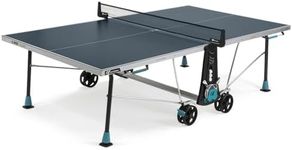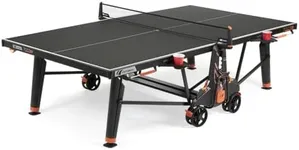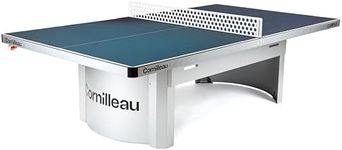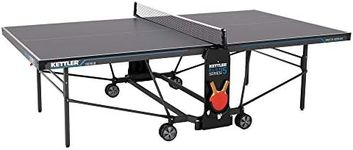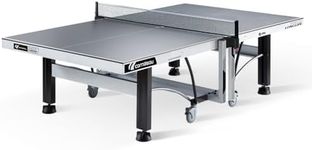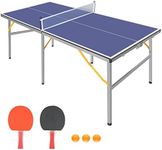Buying Guide for the Best Table Tennis Tables
Choosing the right table tennis table can greatly enhance your playing experience, whether you're a beginner, a casual player, or a serious competitor. When selecting a table tennis table, it's important to consider several key specifications that will affect the table's performance, durability, and suitability for your needs. Understanding these specifications will help you make an informed decision and ensure you get the best table for your playing style and environment.Table ThicknessTable thickness refers to the thickness of the playing surface and is crucial for the bounce quality of the ball. Thicker tables (19mm to 25mm) provide a more consistent and higher bounce, making them ideal for competitive play. Medium thickness tables (15mm to 18mm) are suitable for recreational play and offer a good balance between performance and cost. Thinner tables (less than 15mm) are generally more affordable and lightweight, making them suitable for casual play and beginners. Choose a table thickness based on your level of play and how seriously you take the game.
Table MaterialThe material of the table surface affects its durability and playing characteristics. Most table tennis tables are made from high-density fiberboard (HDF) or medium-density fiberboard (MDF). HDF tables are more durable and provide a better playing surface, making them suitable for serious players and frequent use. MDF tables are more affordable and still offer good performance for recreational play. Consider how often you will use the table and the level of play when choosing the material.
Frame and LegsThe frame and legs of the table provide stability and support. Tables with thicker, stronger frames and legs are more stable and durable, making them suitable for competitive play and frequent use. Look for tables with steel frames and legs for the best durability. For casual play and occasional use, tables with lighter frames and legs made from aluminum or other materials may be sufficient. Consider the stability and durability you need based on how often and intensely you will use the table.
Playback FeatureThe playback feature allows one half of the table to be folded up, enabling solo practice. This feature is useful for players who want to practice alone and improve their skills. If you plan to practice by yourself frequently, look for a table with a playback feature. If you will always have a playing partner, this feature may not be necessary.
Portability and StoragePortability and storage are important if you need to move the table frequently or have limited space. Tables with wheels and foldable designs are easier to move and store. Look for tables with locking mechanisms on the wheels for added safety and stability. If you have a dedicated space for the table, portability may be less important, but if you need to store the table when not in use, consider a model that is easy to fold and move.
Outdoor vs. IndoorOutdoor tables are designed to withstand weather conditions and are made from materials that resist warping and fading. Indoor tables are not weather-resistant and should be kept in a controlled environment. If you plan to use the table outside, choose an outdoor model. If the table will be used indoors, an indoor model will suffice. Consider where you will primarily use the table to determine whether you need an indoor or outdoor table.
